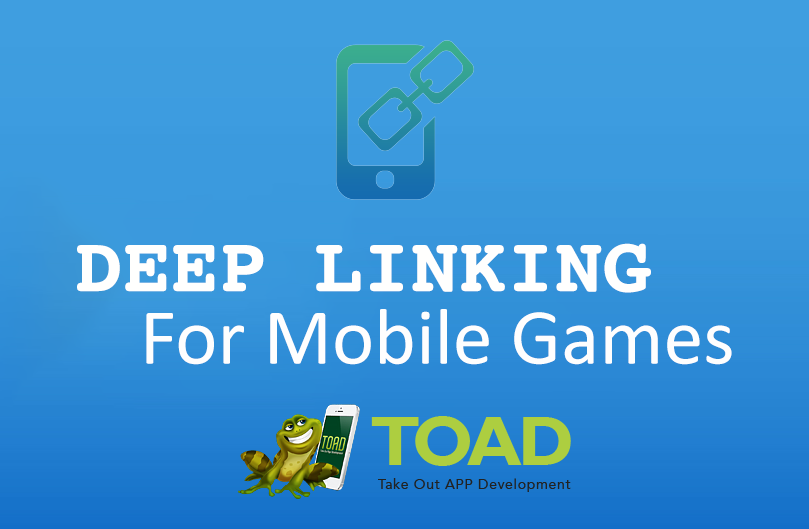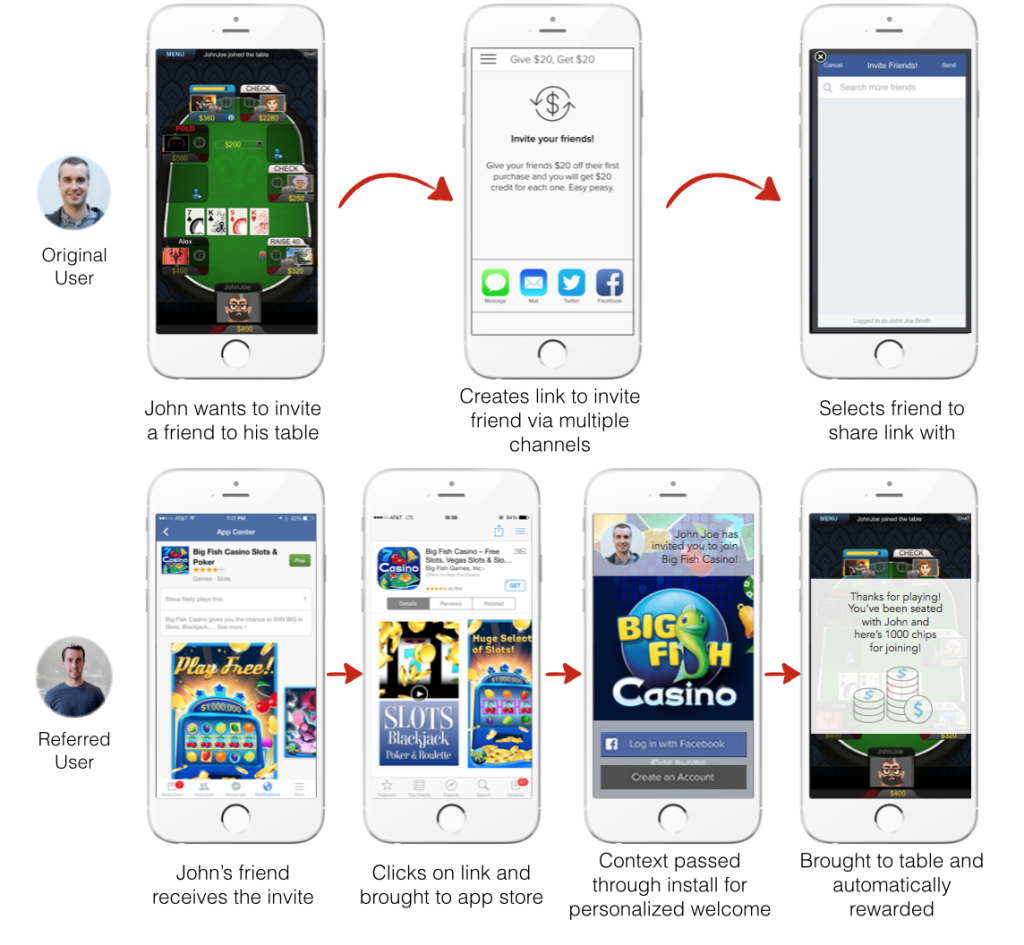09 Sep Why Deep Linking For Mobile Games is Important

Deep Linking has become one of the more popular retention strategies for mobile apps these past two to three years. For games, however, things are just now beginning to pick up. This is mostly due to some apprehensions by developers and marketers with regards to the actual impact of deep links on user engagement and retention for games. In this post, we will discuss how game developers can benefit from this technology.
What is Deep Linking?
Deep linking is the process of directing users to a specific content within the app. The scheme eliminates the need for users to manually download and install an app and search for the content developers want them to see. It is like the mobile version of the hyperlinks in websites.
App developers use deep linking to drive up user engagement and acquisition. It helps determine effective campaigns and properly measure attributions. Non-deep linked content generally suggests poor user experience which gives developers a harder time acquiring new users and retaining existing ones. As we know, users always thirst for instant gratification, and that is something deep links can readily offer.
On top of that, deep linking can also simplify and amplify referral tracking and onboarding process.
There are 3 types of deep links:
1. Basic Deep Links – Basic deep link does exactly what a deep link is intended to do – link users directly to relevant content within an app. However, basic deep link is considered inefficient if the user didn’t have the app already installed in his device. This is where the two other type of deep links come into play.
2. Deferred Deep Links – Deferred deep link eliminates the barrier hounding the basic deep linking strategy. It does not require the user to have the app installed on the device for it to work. Users are redirected to the App Store to install the app. And when they launch it for the first time, they are sent right to the specific screen they intended to see.
3. Contextual Deep Links – Contextual deep link is the most advanced among the three types of deep linking methods. It is a turbocharged deferred deep link with contextual features making it extremely relevant to engagement and retention. Contextual deep link enables tracking of important data such as clicks, installs, referrals and conversion rates. With all this information at hand, deep linking will equip developers to give more personalized experiences to their users and at the same time enabling the marketers to get a better perspective about their campaign’s performance.
How Can Game Developers Benefit From Deep Linking?
Despite the common apprehensions, we can’t deny the fact that deep links provide a strong vehicle for game developers to enjoy a sustained growth without relying too much on paid acquisition campaigns.
Here are some things we think deep linking could be useful to game developers.
1. Incentivized Installs
Developers can employ a rewarded sharing experience with deep links in their games. They can use deep linking to incentivize game installs to get more quantifiable acquisition metrics than just rewarding invites. Existing users can easily create deep links to share to their friends. Bonus points will be given to them for referring new users, at the same time an incentive is given to new users with successful installs. With all the contextual information you can get from a deep link, connecting both users in the game is easy.
For instance, in a casino game, you can encourage users to invite their friends to join them at their poker or blackjack table so they could get free in-game currency. Once a deep link is created and opened, it will fire up the app in the referred user’s device or if not installed, it will open up the app store. When the new user launches the game for the first time, he will be taken directly to the table of the referring user so they can start playing together. And, he will also be given a bonus coin pack to give him a head start. All this, without the need for a manual process like searching for the app in the app store or entering promo codes. You can even determine which users are bringing in most of the new installs and give them another incentive for that.
 image by branch.io
image by branch.io
2. Promote In-App Special Offers
In-game merchandise deals on weapons and power-ups can be boosted with promotions using deep links. Users will be taken directly to where the specific product is located rather than just the main screen of your game. You can get your deep link out through in-app messages, social media, emails, ads or push notifications. This simplifies the conversion process by optimizing the user flow. It enables you to create a shortcut for users to directly look into your in-app offers. Offering discoverable content can easily influence users to buy what they really want. This will give you greater revenue opportunities and improved ROI.
3. Optimize Ads
Deep linking is essential for game developers and marketers in optimizing social media ads. Users do not like surprises when they click an advertisement. But, they expect to see the exact content that the ad is talking about. This is where deep linking goes into action. It can bring users directly to the content that pushed them to your game and allow proper attributions for their actions toward your campaigns. With proper attributions, you can polish your ad campaigns and focus on the most effective ones.
4. Increase Retention
Most games work based on a progression model which means that they always involve levels. Deep linking can bring back users straight to the levels where they left off. It is like sending a “Continue” button to your existing players after being stuck. You can encourage your users to ask for help from their friends by sharing a deep link. Once their friend downloads and installs the app, they will be rewarded with what they need, probably a new weapon or additional coins, to help them finish the level. The focus of app marketing today is slowly shifting from app installs towards app engagement. And, deep linking is in a perfect position to help keep user engagement high for over a longer period of time thereby strengthening retention.
5. Boost Acquisition
You can augment your user acquisition strategy by using deep links. Incentivising installs and optimizing ads, as mentioned above, are two concrete ways to do it. Deep linking will give you more control over the users to target. It could even provide you with the opportunity to tap an entirely different market. It’s all about the analytics that contextual deep links offer. With relevant data, you will be right on your way to executing a robust and well-planned acquisition plan.
CONCLUSION:
Deep linking surely still needs a lot more polishing, especially for mobile game implementation. But, we can see that it can really improve user retention and bolster acquisition efforts. We discovered how it can enable developers to streamline the user experience which should result in better engagement.
Using deep linking effectively will certainly produce appealing campaigns that will eventually draw more and more gamers deeper into your game.
If you enjoyed this post, sign up for our list to get future updates. Subscribe now!



